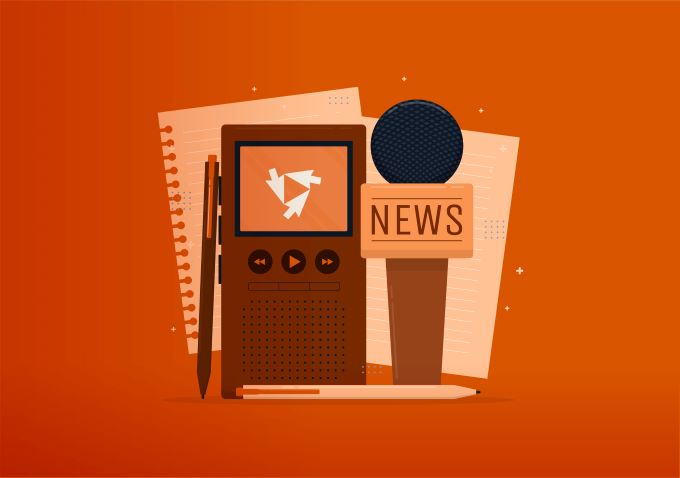

Winners & Losers in the post-pandemic world
The content creation landscape has changed more drastically than ever. Who could have seen it coming at the beginning of 2020?

It’s hard to believe that just 10 months ago, everything was still ‘normal’. Now, our daily lives have been thoroughly disrupted — who knows what ‘normal’ even means anymore?
We have been forced to rely on the Internet and associated technology, most of us were stuck indoors for a few months, and we’ll have to wear masks outdoors for the foreseeable future.
With our lives being turned topsy-turvy, it’s no surprise that the nature of content creation and its consumption has changed. And while things appear to be slowly going back to what it was before (fingers crossed!), these changes are likely to stay for a little while longer.
But how has it changed, and who are the ones who’ve emerged triumphant from the situation?
A changing landscape
For one, B2B sales and marketing have not escaped unscathed from the countless disruptions and changes brought about by the pandemic. Now, having to work from home, our personal and professional lives have slowly melded together — which means that B2B brands have to also compete with B2C as well.
Long gone are the days of cold, rational content made in the name of professionalism. In order to stay competitive, B2B marketers have had to take a more personal approach, and that starts with telling a story.
More and more businesses are also looking towards human connection, empathy, and even humour. For content that strikes the heart, take a look at HP’s Dear Future Me video campaign — a short film series that features touching stories of high school students reading letters written by their younger selves.
“Elevating stories like these is core to our commitment to create technology in the service of humanity. These films tap into common emotion and experiences that bond us all,” said Karen Kahn, HP’s Chief Brand and Communications Officer about the video campaign.
A great example of a humorous B2B marketing campaign is this marketing campaign by Servicenow, which pokes fun at the state our lives in this post-pandemic world, and how their product can help ease our transition back into the workplace.
While digital channels have long been a key feature of B2B marketing, if there’s anything the pandemic has shown, it’s how businesses need to come up with innovative ways to stay competitive.
From conducting virtual events such as webinars, to using a 360° VR video experience, B2B brands who know how to harness the powers of technology and the Internet will stand out in the post-pandemic world.
News and pandemic positivity
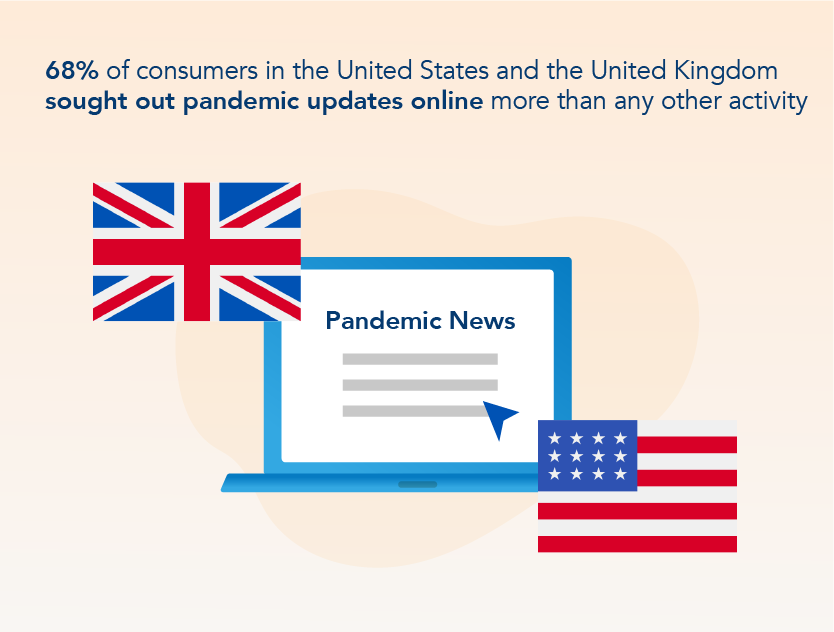
The pandemic didn’t just bring about a surge in demand for toilet paper, but also in news sources. It didn’t matter where the news came from — local news networks, international news databases, or even unchecked news on social media — people just wanted to be up-to-date on the virus.
But keeping abreast of the news can become overwhelming — especially since it seemed like there was a never-ending stream of bad news. Eventually, people began to seek other forms of entertainment to distract them from the horrors of the real world.
Many companies saw their business take a dive as a result of lockdown, but not those in the online streaming business. As it turns out, a lot of people had ‘Watch your favourite show’ on their quarantine self-care list. Streaming services have recorded an increase in popularity since the pandemic, and during the lockdown period of three months in the United States, Netflix actually saw almost twice as many new subscriptions compared to the final months of 2019.
In their quarterly investment letter, the company said: “we live in uncertain times with restrictions on what we can do socially and many people are turning to entertainment for relaxation, connection, comfort and stimulation.”
Furthermore, because many popular streaming services feature films, documentaries, and television series from all over the world, you’d never run out of things to watch while stuck at home.
In fact, if we take a bird’s eye view of the industry as a whole, people are watching shows from more sources than ever before. Studies have shown that the average number of television sources being used by consumers in April 2020 was 4.8, and they cover everything from over-the-air, to pay TV, and streaming platforms.
A balm for isolation
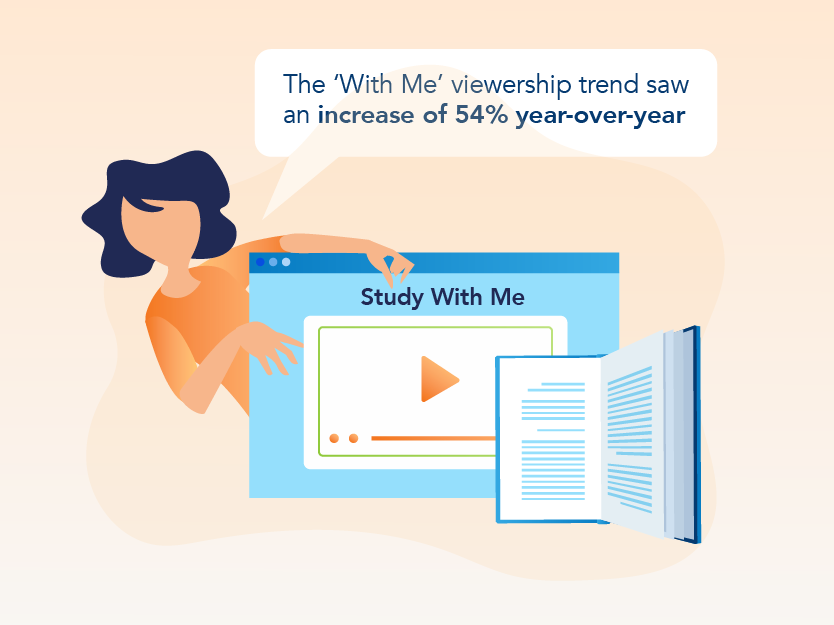
For many, one of the greatest challenges during the lockdown periods was the lack of social interaction, especially for those who lived alone.
Video trends observed in the thick of the pandemic have also reflected the increasing need to soothe the ache of isolation. ‘With Me’ videos often featured YouTubers doing mundane tasks such as studying, cooking, and even cleaning, and saw a spike in popularity during lockdown periods.
While it may sound silly to watch these videos for entertainment, ‘With Me’ videos actually provided momentary companionship and even motivation — they served as a makeshift workout or study buddy, of sorts. Some ‘With Me’ videos even provided useful tips for viewers.
“Somehow, watching someone be productive makes me want to be more productive too, which I assume is the whole purpose of the video. And let me just say, mission accomplished,” wrote one student blogger about Study with Me videos.
The search for social interaction

Despite their popularity, the interactivity of ‘With Me’ videos is ultimately one-sided. While you can leave comments on the video, sometimes this feels like shouting into the void — who knows if you’ll ever get a reply?
In contrast, livestreaming offers a more intimate connection. It provides a more interactive experience, as the streamer is more likely to respond to your comments in real time, and you can even have conversations with other viewers in the live chat as well.
It’s no wonder that more people have gravitated towards watching livestreams. To give an estimate of how much popularity livestreaming has gained, Twitch TV, the biggest livestreaming platform, saw a 50% increase in hours watched between March and April 2020.
And because there is no limit to what you can do on livestreams — from playing video games, to chill chatting sessions, and even coding streams — there seems to be something for everyone. Getting entertained while becoming part of a community in chat — what’s not to love?
Making the switch
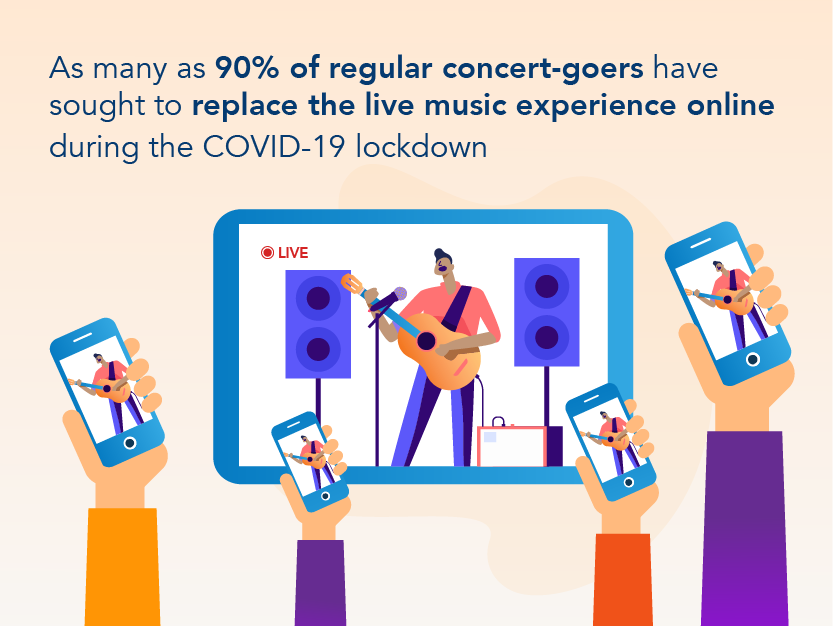
For many other sectors, however, the pandemic has been a massive disruption: those who made money from events or gigs definitely suffered a loss during the pandemic. For media companies, studio production and filming has had to be delayed.
But this is where technology comes in to save the day — for some at least.
For those who were disappointed about the cancellation of their favourite singers’ concerts, online concerts are now a thing — and a huge thing. And even though these virtual concerts certainly lack the best parts of going to a concert, the improved accessibility for international fans is a huge plus.
“I never thought an online performance could replicate the feeling of a magical live show,” said Seth Hubbard, director of indie record label Polyvinyl Records told Vox Media. “But I have already been reduced to tears watching a performance on Instagram Live. So maybe there is hope for filling the void while we wait out Covid-19.”
It’s also not just concerts — even opera and theatrical performances have gone online! Theatres in particular have looked into digital productions that are aired on YouTube and even performed on Zoom.
Nightclubs and nightlife entertainers have also jumped on the livestreaming trend. Yes, you read that right. Clubs such as Zouk Digital are organising monthly or even weekly livestream sessions so that you can groove to the music from the comfort of your own home.
Those who’ve lost out
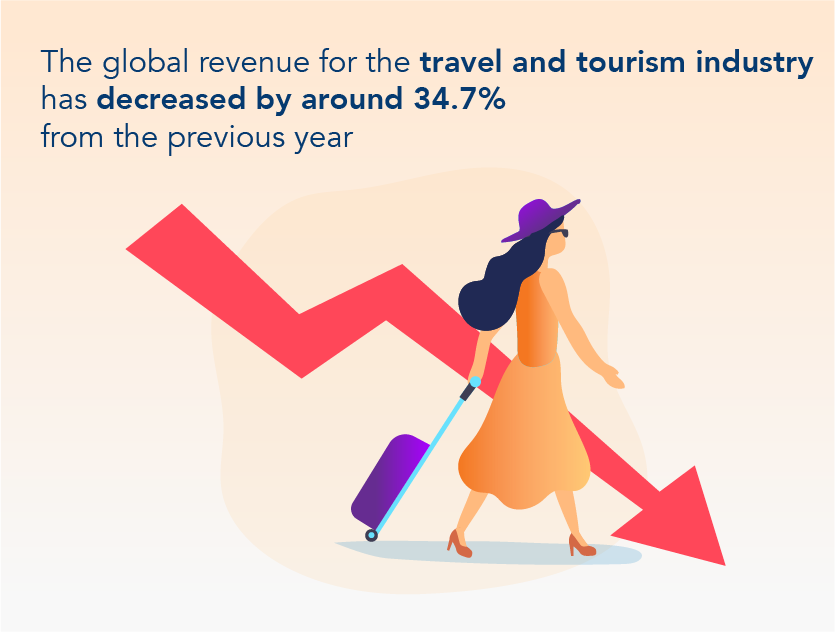
But it’s not all sunshine and roses. Some industries have really struggled to adapt. Travel bloggers, for example — or the entire travel and tourism industry, really — have been hit hard by the pandemic.
Their inability to travel, however, is not necessarily the biggest problem. Travel bloggers often have a backlog of content that they have yet to write about, and many have decided to use their blogs to educate their following on the pandemic and give them advice during lockdowns.
What they are truly impacted by, however, is a lack of traffic on their blogs, which directly affects advertising revenue as well as affiliate income. Unfortunately, with countries still in lockdown and international leisure travel still on a hold, it seems that they might have to wait it out.
“I think we are all hard hit, but yes, I think directly it’s travel influencers that are hit the hardest. I keep finding myself wishing I was a food blogger since I would at least be able to create content at home, and perhaps work with brands that are seeing an uplift in sales,” travel blogger Hannah Tafft told Influencer Intelligence.
That said, on the whole, the travel industry is finding ways to recover in the long term — and they are, slowly. Travel companies and tourism boards have been looking into the use of virtual reality (VR) tours in order to better market their tourist destinations.
Want to deer-watch at Nara Park? Now you can. Have a look at some tourist destinations in Japan through VR from the comfort and safety of your home, courtesy of the Japanese Tourism Board!
Countries that are greatly dependent on international travel have also been looking into strategies that will boost local tourism. In Singapore, for example, cruise companies and authorities have worked together to come up with ‘cruises to nowhere’, which are basically round-trip cruises with no ports to call.
It’s a win-win situation — cruise companies are able to gain revenue after losing out greatly during the pandemic, and customers are able to finally fulfil their pent up desire to travel without violating regulations.
The importance of being adaptable
Remember the times when people were convinced that working from home or having online lessons were inconceivable and impossible? This pandemic has taught us to see all the doors that technology has opened for us.
We have also been forced to think out of the box — many companies have adopted innovative ways to work around restrictions while still producing content. Oakland-based band Thao & The Get Down Stay Down exercised some creativity and filmed a music video entirely on Zoom in one take.
Similarly, this advertisement for Audi Middle East was filmed in a studio using miniature car models and a self-made desert and roadway. Even with restricted travel, you’d still need beers and a car!
Ultimately, businesses still need to survive no matter the global situation. The pandemic has only proven that those who were able to adapt quickly to current trends and harness the power of technology are the true winners of this post-pandemic world.
Read more from Click2View:
- Buyer personas are the way to your customers’ hearts.
- Level up your conversions with A/B testing
- What makes a great case study?
Sign up to our newsletter for a weekly update on the latest content marketing news. Don’t forget to subscribe to our YouTube channel too!
Click2View is Southeast Asia’s premiere full-service independent B2B content marketing agency servicing clients like Microsoft, Google, Visa, Prudential, and the Lee Kuan Yew School of Public Policy.






